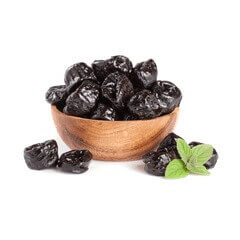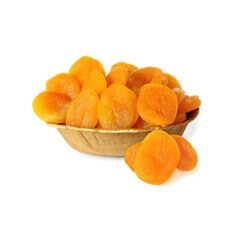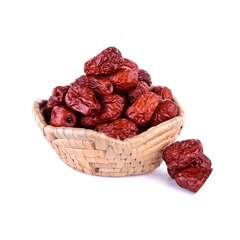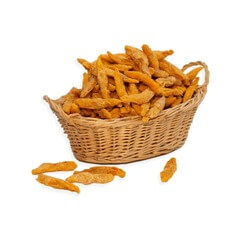The date is the fruit of the date palm, a plant belonging to the large palm family.
This fruit tree is particularly grown in North Africa and southern Europe. The date is very popular for its sweet and fleshy flesh and nutritional values: rich in carbohydrates, fibers, vitamins, and trace elements. It is a source of energy for the body, especially after a sports session or in the event of slight fatigue. The date is used in both savory and sweet dishes and lends itself very well to drying to allow longer storage and enjoy its benefits all year round. Here are three techniques to keep dates fresh longer and obtain quality dried dates, so continue reading the article and don’t go anywhere.
The Different Varieties of Dates to Dry
There are more than 300 varieties of dates, giving fruits that differ in size, texture (soft or firm), and sugar content.
For drying, favor the most fleshy and sweet fruits, which will contain less water and will be easier to dry.
Opt for example:
- the deglet nour from Algeria, one of the most popular with a soft amber color, giving soft and creamy fruits with a honey taste;
- the Medjool with large fleshy and soft fruits;
- khudri, mainly grown in Saudi Arabia, with crispy skin and firm flesh;
- barhi, with a fibrous and crunchy semi-dry texture;
The date harvest usually takes place between October and December.
However, you can absolutely find fresh dates in bulk in oriental grocery stores, markets, organic stores, or even on the internet. You can then dry them at home in order to keep them longer and enjoy them in any season.
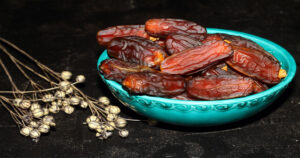
Drying should ideally be done soon after picking. For optimal drying, select fruits picked as recently as possible are very ripe, fresh, and soft.
Their appearance must be healthy, shiny, and free of a white film (sugar gradually rising to the surface of the fruit as it ages).
Prefer dates of similar sizes for a more homogeneous drying time.
Preparing Dates for Drying
Before putting the fresh dates to dry, be sure to prepare them well:
- Clean the fruits with clean water and dry them with a cloth or paper towel;
- Pit the dates by cutting them in half lengthwise;
- Slice them into thin strips for faster drying.
Dry Dates in the Oven
Oven drying is the simplest method and is effective for most fruits. It gently evacuates the water present in the food without cooking it.
- Preheat your oven to low temperature, ideally 50 to 60°C;
- Arrange the fruits on baking paper next to each other, the cut part upwards, spacing them out so that they do not stick together;
- Leave to dry for 6 to 12 hours (drying time depends on the variety of fruit and oven temperature);
- At the start of cooking, regularly open the oven door to allow the condensation to drain away;
- Regularly check the texture of the fruit and turn the dates for more even cooking.

You can also start drying at the end of cooking a dish in order to take advantage of the heat already stored in the oven.
When dried, dates become firm and dark. Allow fruit to cool before storing for storage.
Drying Dates in the Dehydrator
The dehydrator is a device that dries food at low temperatures and evenly. More energy efficient than the oven, it does, however, require an additional investment.
The purchase can be profitable if you are used to regularly using drying as a means of preserving fruits and vegetables.
- Simply arrange the date strips on the shelves of the dehydrator without overlapping ;
- The drying time and the temperature used vary according to the device: simply follow the indications provided by the instructions for use.
Naturally Sun-Dried Dates
Do not hesitate to test the drying of dates outdoors in hot and sunny regions. It is the most natural and economical technique since it simply uses the heat of the sun’s rays. However, it is more random and longer, depending on weather conditions.
- Arrange the date strips on a wooden crate or grid (the support must allow air to circulate as much as possible), spacing them out so that they do not overlap;
- Place them in the sun in a ventilated, warm and dry place, away from humidity;
- Protect them from insects and dust by covering them with a mosquito net or cheesecloth;
- Turn the fruit regularly for even drying;
- Bring the fruit under cover at night or in case of bad weather.

Another alternative:
- Use the Espelette pepper drying technique.
- Prick the fruit with a needle, tie them together with food string, spacing them out so that the air circulates well.
- Hang them covered with a thin fabric facing south.
Under good conditions of heat and dryness, drying can be complete after ten days.
Storing Homemade Dried Dates
Dried dates can be stored for six months to a year. They will be stored in airtight containers (glass, plastic, metal) in a dry and cool place, away from humidity and light.
It is also possible to reduce the dates to powder in a mortar or in a blender to preserve them.
Use Dried Dates In Cooking.
Enjoy the many nutritional benefits of kitchen-dried dates.
Use them:

- in a sweet version in cakes, ice creams, compotes, smoothies, granolas, and fruit salads;
- in a savory version in oriental dishes, stuffing’s, sauces, or salads;
- natural, for a healthy and energetic snack;
- Rehydrated (steamed for a few minutes or soaked in lukewarm water or fruit juice for a few hours).
To get the best quality dry dates, dried fruits, Raisins, basmati rice, nuts, and seeds, visit the ADNOOR website. We have been the importers, exporters, wholesalers, distributors, and co-packers of various nuts and grains in Canada for the last 25 years. We are the best rice suppliers in GTA. We continuously strive to provide our customers with the best quality products at a reasonable price. For more details, visit our website.




